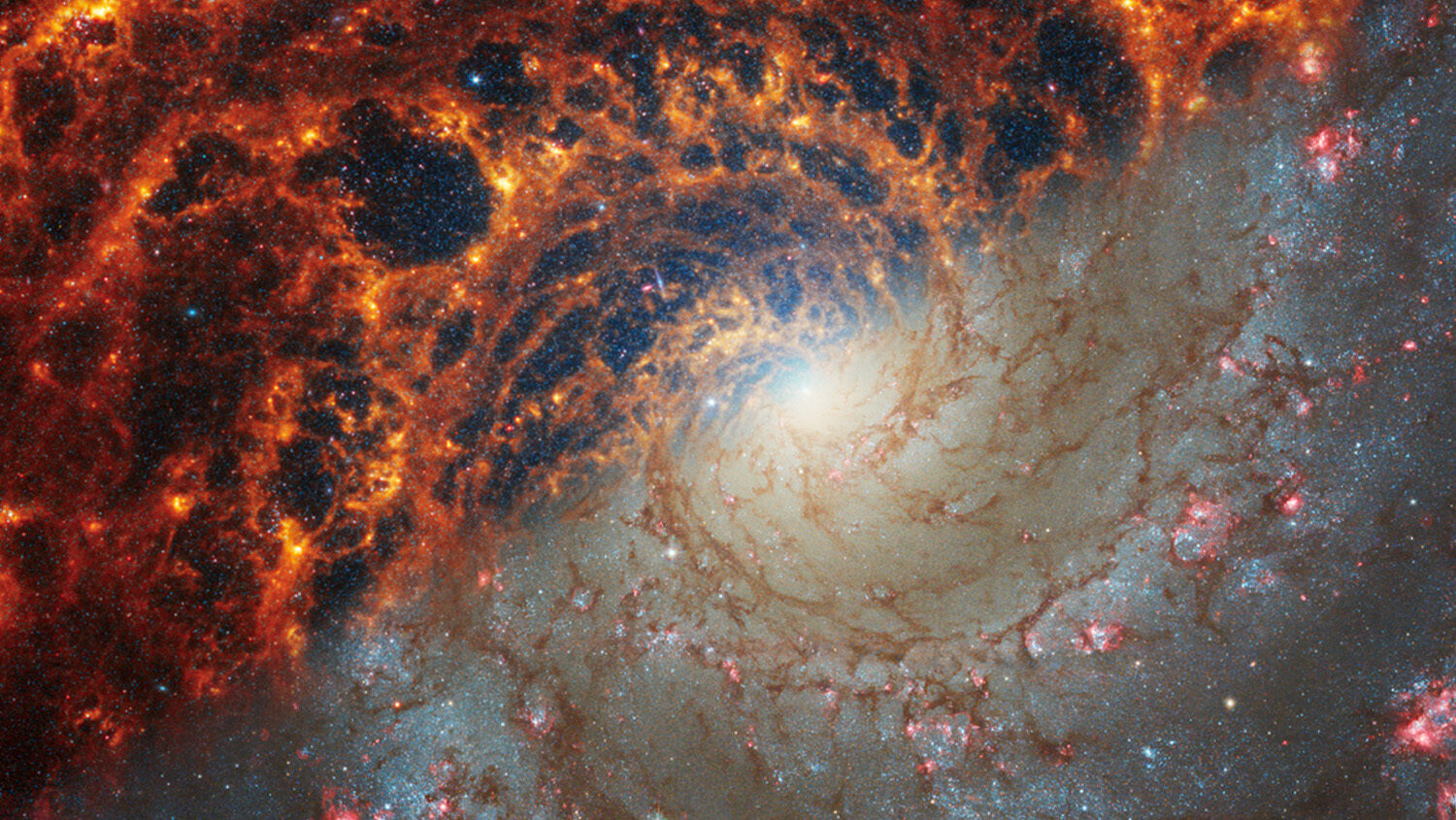
Stunning New Images From the James Webb Space Telescope
Nasa published 19 stunning images taken by the James Webb Space Telescope on January 29 showing remarkable nearby spiral galaxies.
The closest of the galaxies, ngc 5068, is about 15 million light-years from Earth, and the most distant, ngc 1365, is about 60 million light-years from Earth.
Mind-blowing: Webb’s strategic position at the second Lagrange point and its near-infrared camera enable it to capture the universe in much greater detail than any other telescope. The new images show roughly 100,000 star clusters and billions of individual stars.
They’re mind-blowing even for researchers who have studied these same galaxies for decades. Bubbles and filaments are resolved down to the smallest scales ever observed and tell a story about the star formation cycle.
—Janice Lee, Space Telescope Science Institute
The unprecedented number of stars captured will help shed more light on the formation of stars and spiral galaxies, scientists say.
The images are not only aesthetically stunning, they also tell a story about the cycle of star formation and feedback, which is the energy and momentum released by young stars into the space between stars.
—Janice Lee
Universe potential: Some scientists have continually attempted to fit new findings of the Webb telescope into existing notions about the origin of the universe that ignore the Creator, but they have been unsuccessful. These inspiring images actually declare our marvelous Creator (Psalm 19:1) and continue to give us a better look at the extent of His creation.
The Bible reveals that ultimately “all things” will be put in subjection under man (Hebrews 2:8). God wants to give mankind the entire universe!
To learn more about our vast universe and the incredible role you have in it, request our free booklet Our Awesome Universe Potential.
